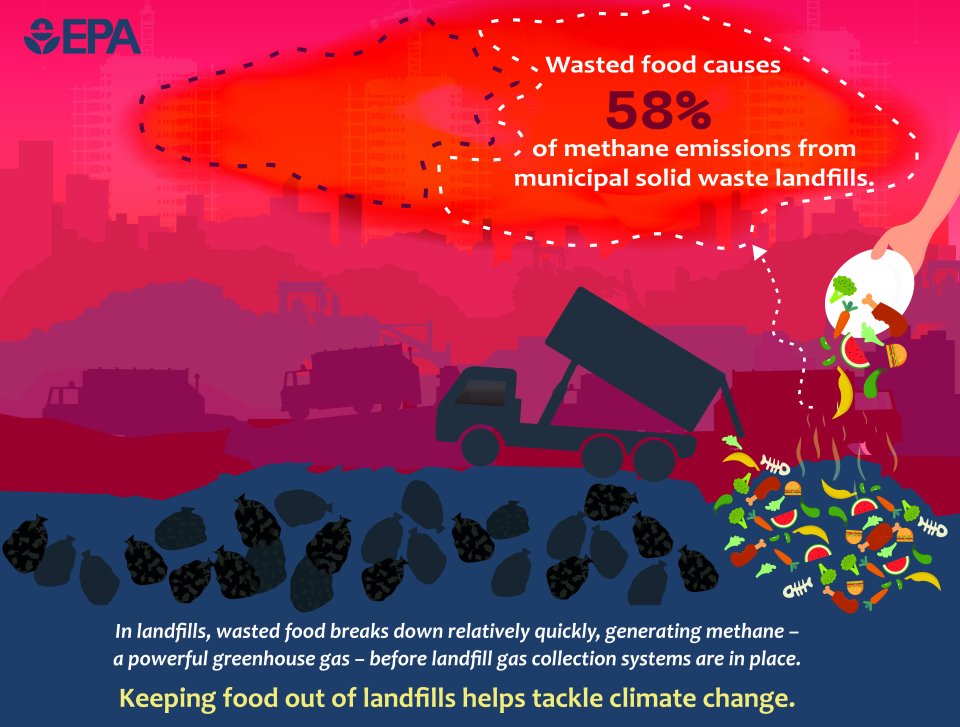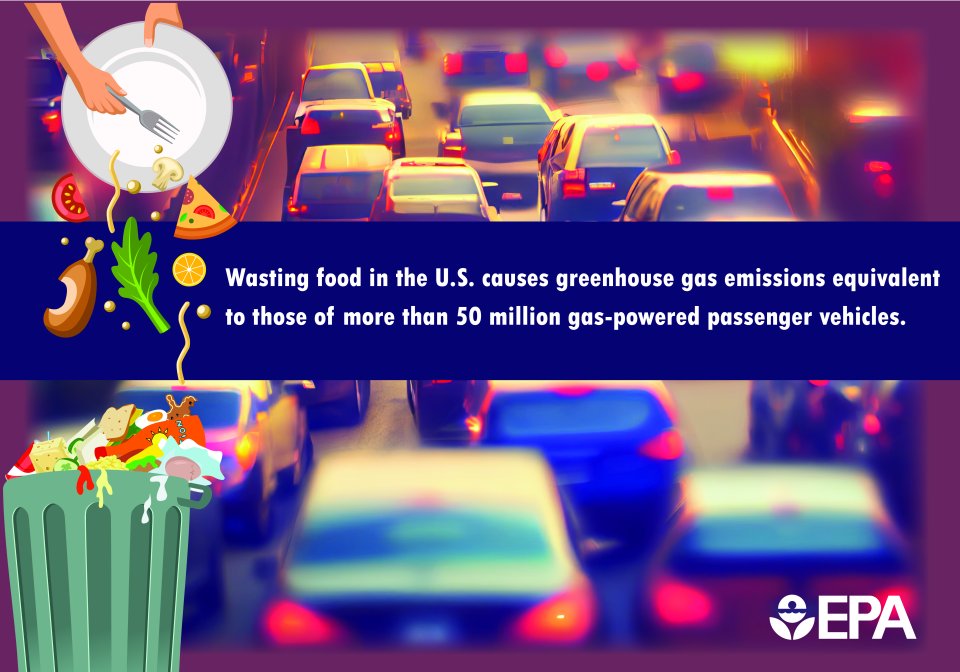Quantifying Methane Emissions from Landfilled Food Waste
Methane, a powerful greenhouse gas, is emitted from landfills, resulting from the decaying of organic waste over time under anaerobic conditions. Municipal solid waste landfills are the third-largest source of methane emissions from human activities in the United States. Food waste comprises about 24 percent of municipal solid waste disposed of in landfills. Due to its quick decay rate, food waste in landfills is contributing to more methane emissions than any other landfilled materials. An estimated 58 percent of the fugitive methane emissions (i.e., those released to the atmosphere) from municipal solid waste landfills are from landfilled food waste.
EPA has developed a report quantifying methane emissions from landfilled food waste and a calculator for users to estimate the methane emissions reductions per ton of food waste that does not go to landfill.

Report
To understand the impact food waste has on U.S. landfill greenhouse gas emissions, EPA developed the report, Quantifying Methane Emissions from Landfilled Food Waste, to estimate the quantity of methane emissions released into the atmosphere from decaying food waste in municipal solid waste landfills in the United States from 1990 to 2020. This analysis relied on existing, widely-used EPA models and data sources to compare the estimates of modeled methane emissions while examining factors that influence methane emissions. These factors include 1) total tonnage of landfilled food waste, 2) landfill characteristics, 3) food waste decay rate, 4) landfill gas collection systems installation and efficiency, and 5) amount of methane oxidized as the gas passes through the landfill cover material. This report is EPA’s first published estimate of annual methane emissions from landfilled food waste and the first peer-reviewed national reference point for the amount of methane emissions attributable to food waste in U.S. municipal solid waste landfills.
Results from the analysis revealed that while total emissions from municipal solid waste landfills are decreasing, methane emissions from landfilled food waste are increasing. Findings from this report illustrate the outsized impact landfilled food waste has on methane emissions. This data confirms that diverting food waste from landfills is an effective way to reduce methane emissions from municipal solid waste landfills.

Calculator
While developing the report, EPA recognized the need for a calculator that interested parties can use to estimate the total avoided methane emissions per ton of food waste diverted from final disposal in landfills over time. The Avoided Landfilled Food Waste Methane Emissions Calculator uses the same landfill and food waste characteristics found in the “Quantifying Methane Emissions from Landfilled Food Waste” report (e.g., food waste decay rate, food waste’s methane generation potential) and uses factors from the EPA Waste Reduction Model (WARM) (e.g., methane destruction efficiency in flares, methane collection efficiency, gas collection installation schedule) to estimate the amount of methane generated from each ton of landfilled food waste.
The calculator can be used by anyone, including state, Tribal, and local governments, institutions, schools, or private companies, to estimate the methane emissions reductions per ton of food waste that does not go to the landfill. Users can download the calculator and use the results for their own outcomes, including grant applications, program planning, and reporting.
Download Links
Report: Quantifying Methane Emissions from Landfilled Food Waste (pdf)
Calculator: Avoided Landfilled Food Waste Methane Emissions Calculator (xlsx)
Landfill graphic: Landfill Methane from FW_EPA graphic 2023 (jpg)
Vehicle emissions graphic: Car emissions FW life cycle_EPA graphic 2023 (jpg)
